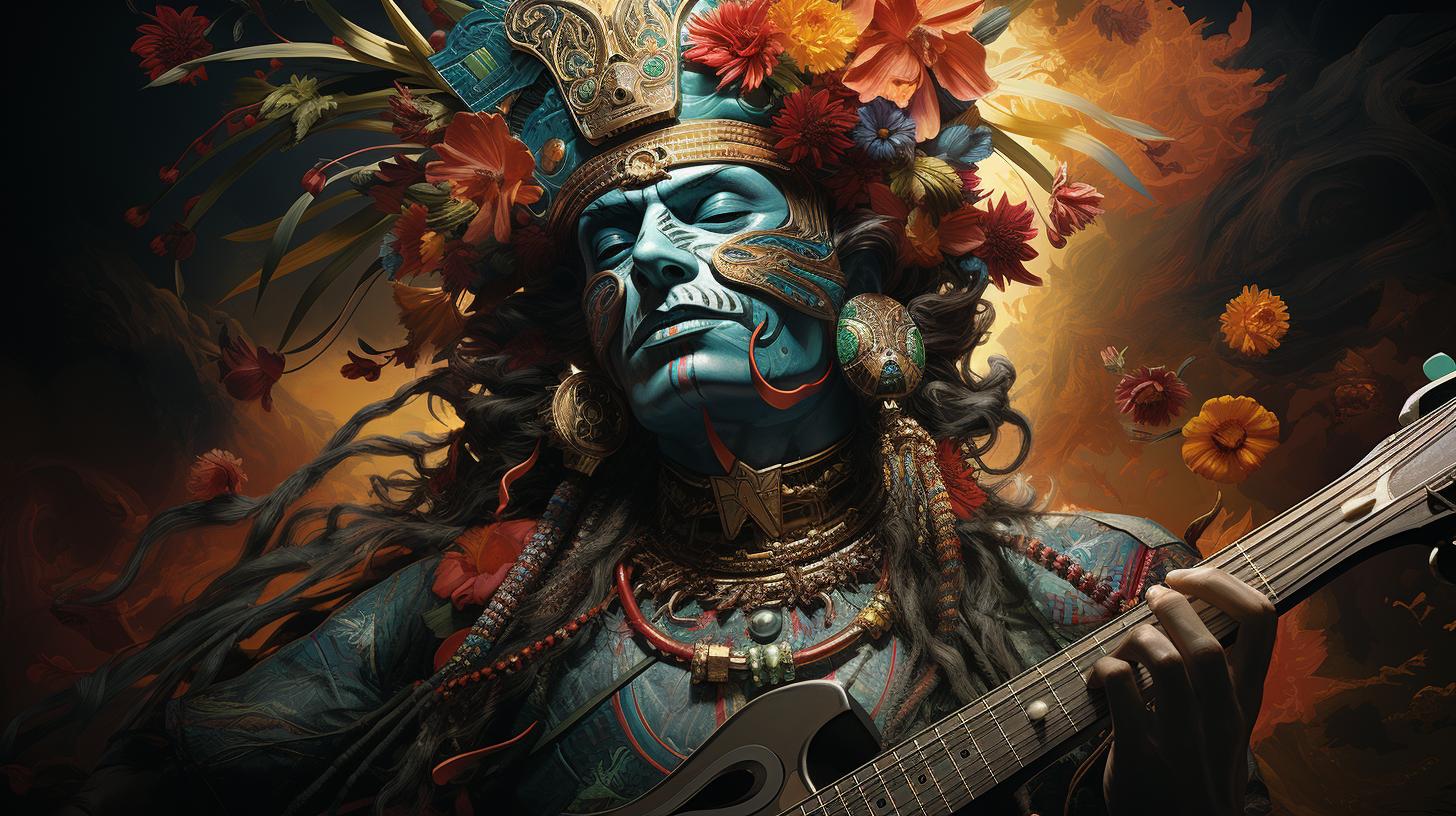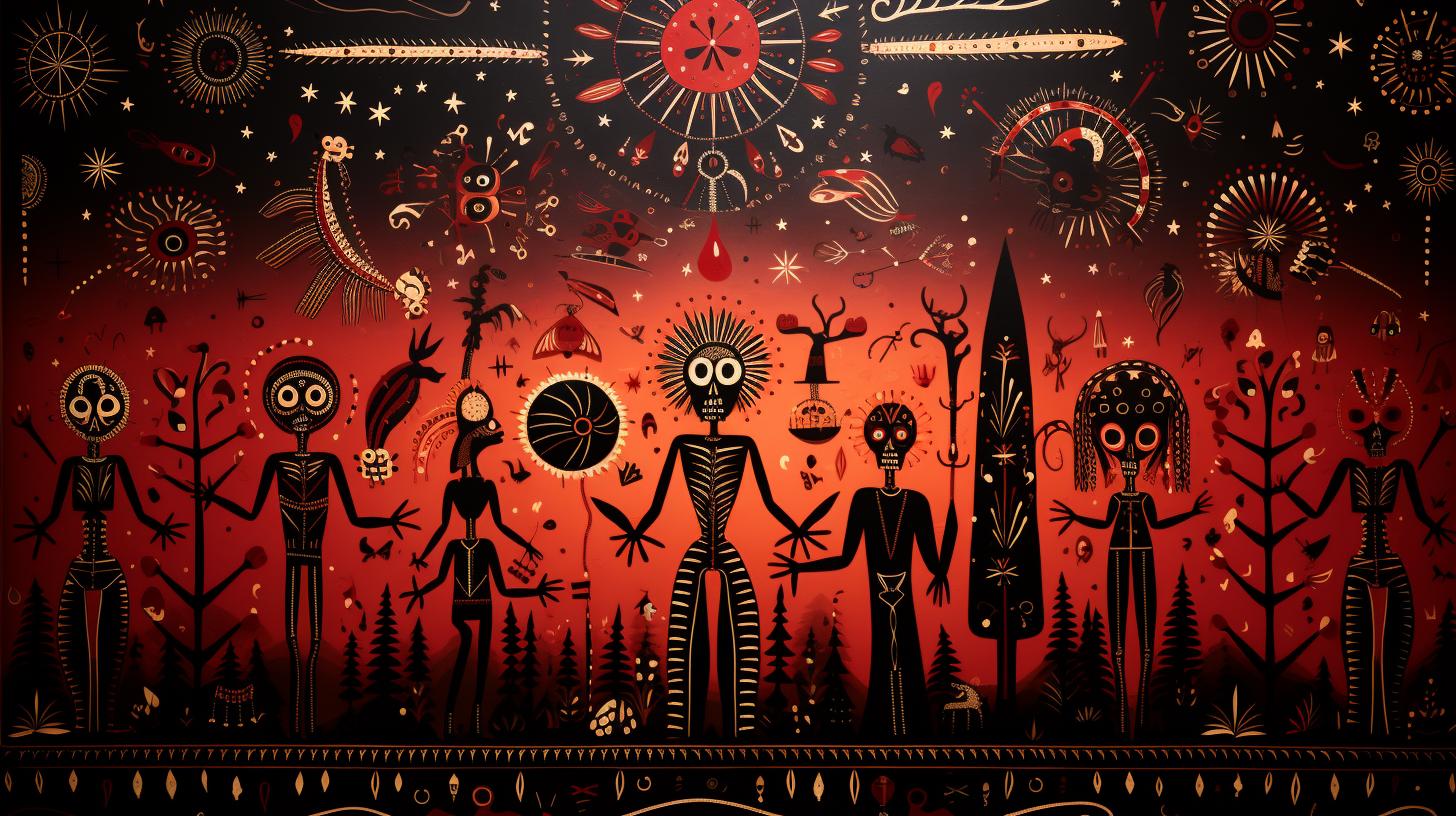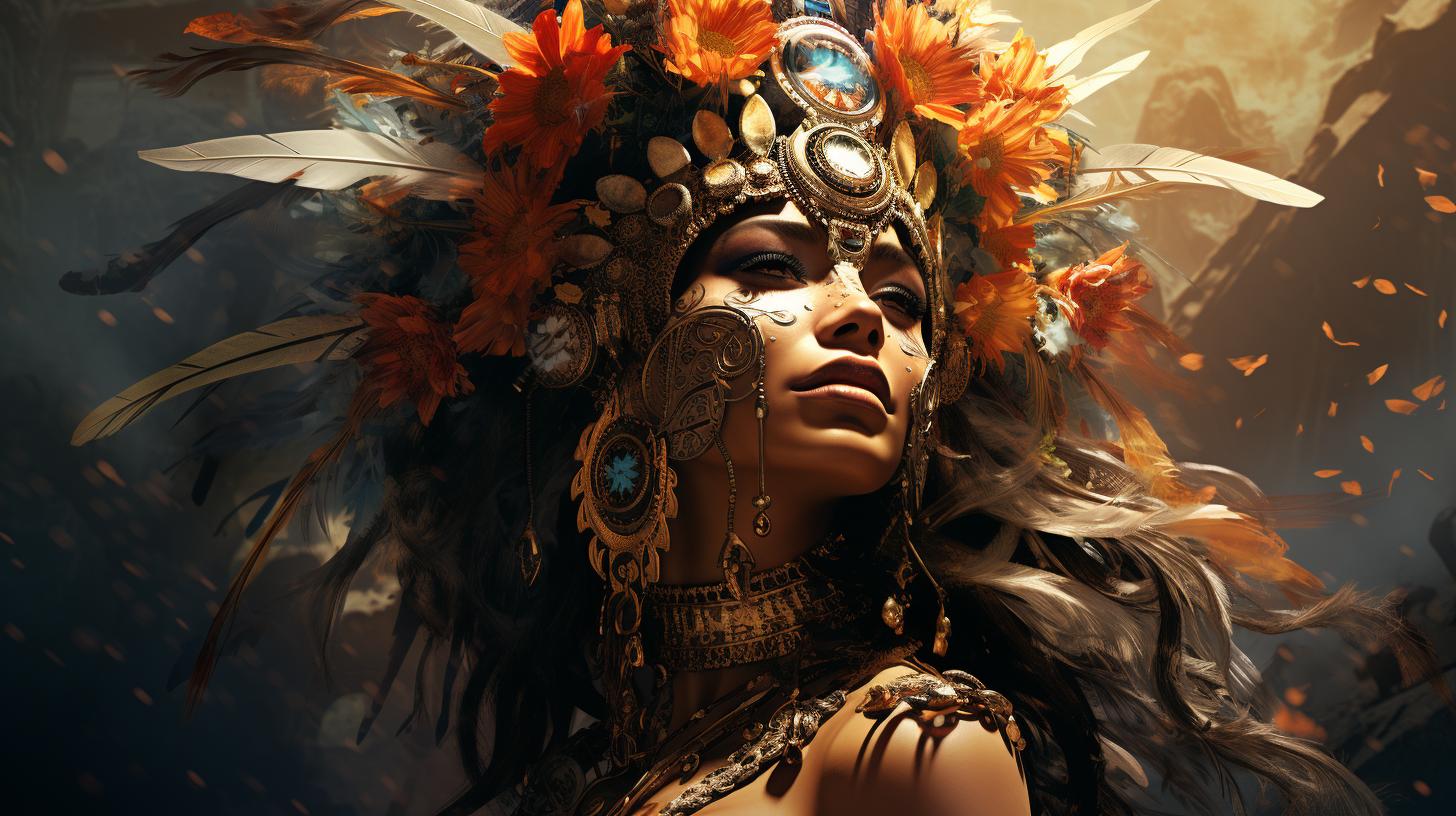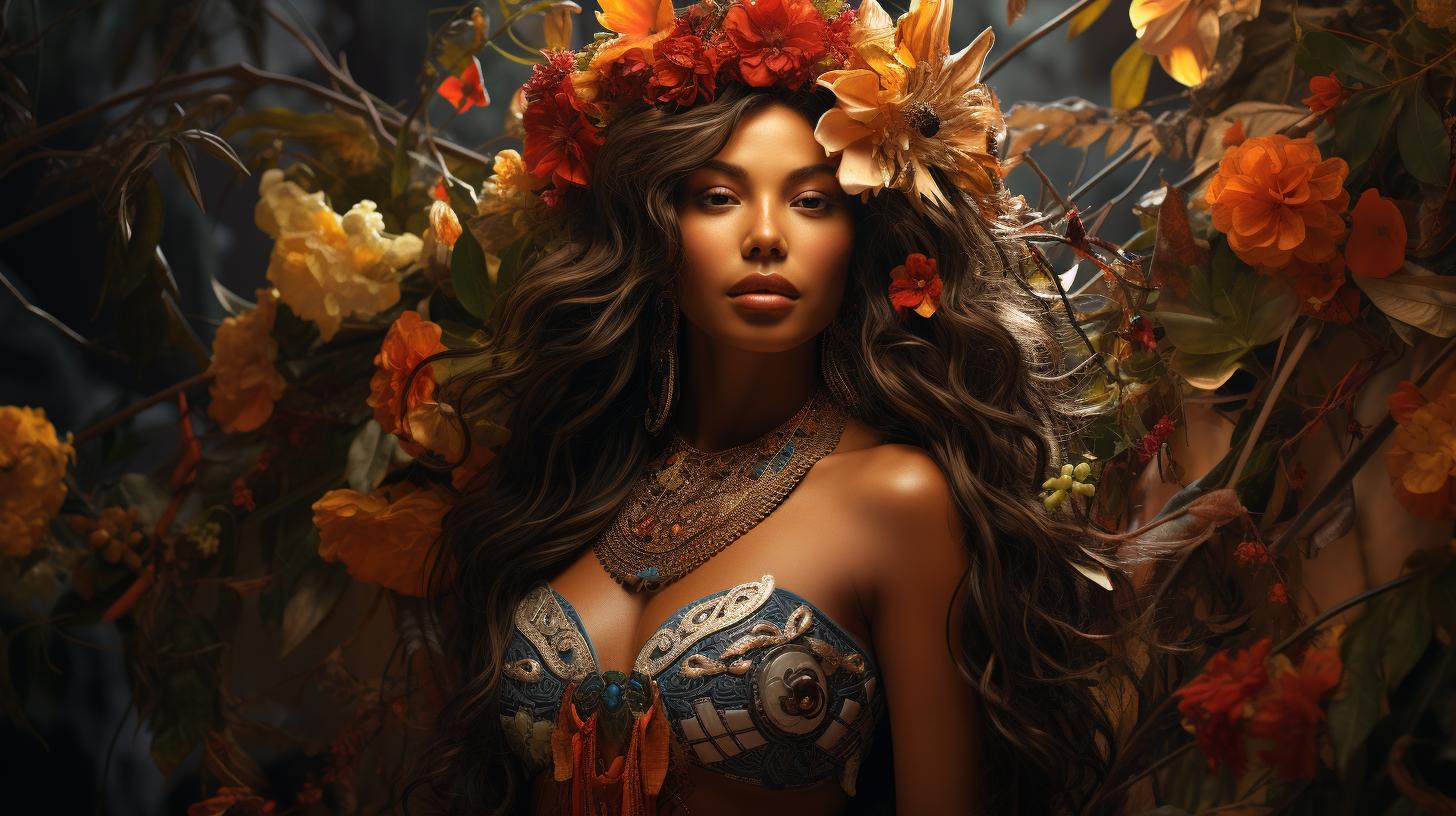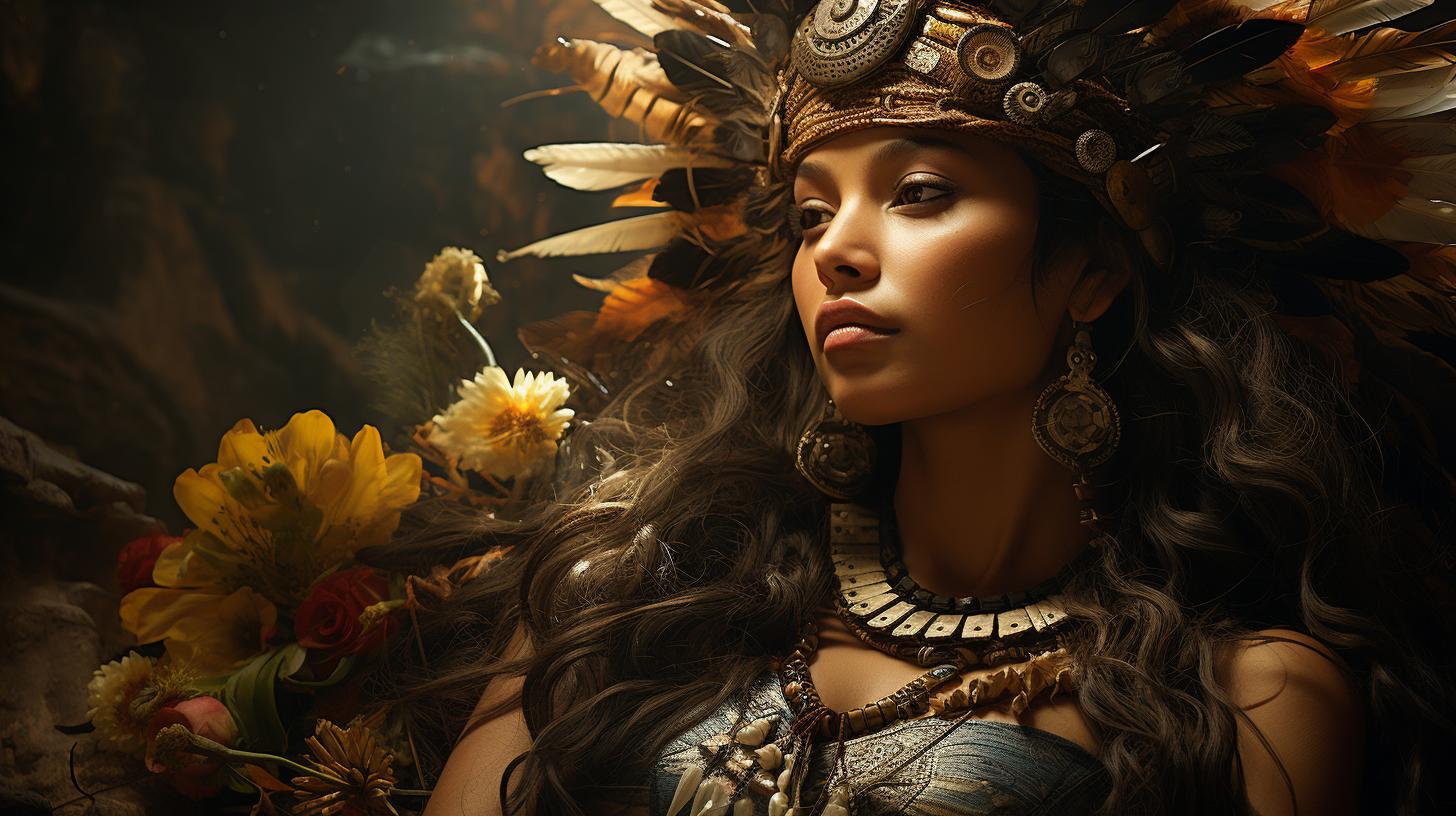Aztec Goddess Mayahuel: Exploring the Fertility and Transformation in Aztec Mythology
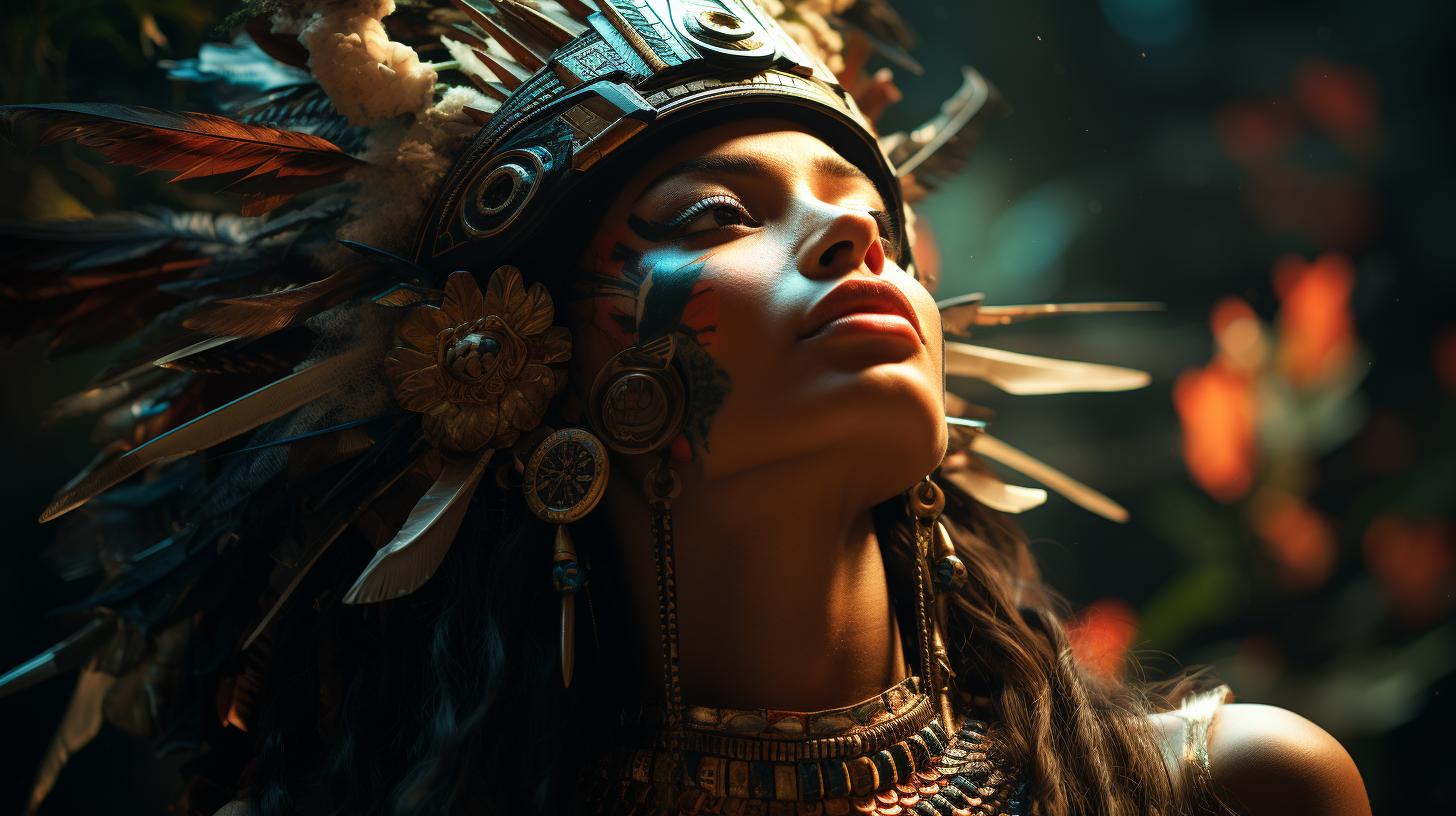
The Aztec goddess Mayahuel holds a significant place in Aztec mythology, representing fertility and transformation. Her story is intertwined with love and longing, as she sought passion and escape from her solitary existence.
Encountering the wind serpent god Ehecatl led to a love that couldn’t be contained, resulting in their celestial dance and union. Mayahuel’s jealous grandmother plotted to end their love, but Ehecatl protected her, transforming them into the agave plant.
This plant, symbolizing passion, gave birth to pulque, a revered alcoholic drink. Mayahuel’s depiction in art and her connections to other deities highlight her power and importance in Aztec culture.
The Mythology of Aztec Goddess Mayahuel
The Aztec goddess Mayahuel holds a significant place in Aztec mythology, with her origins rooted deeply in Aztec culture.
Exploring her story reveals a fascinating narrative that intertwines themes of love, transformation, and fertility. This section delves into the origins of Mayahuel in Aztec culture, the captivating story of her love with Ehecatl, and the symbolism behind the agave plant and pulque.
The Origins of Mayahuel in Aztec Culture
Mayahuel’s presence in Aztec mythology can be traced back to the ancient beliefs and traditions of the Aztec people. As a central figure, she played a crucial role in the religious and cultural practices of the Aztec society.
This subsection explores the significance of Mayahuel in Aztec mythology and her connection to the overall belief system.
Mayahuel’s Role in Aztec Mythology
Within Aztec mythology, Mayahuel assumes the role of the goddess associated with the maguey plant and pulque. Her divine attributes and symbolism align with fertility, transformation, and the cycles of life and death.
This subtopic allows us to delve deeper into the specific roles and functions attributed to Mayahuel in Aztec mythological narratives.
Her Connections to Fertility and Transformation
Mayahuel’s significance extends beyond her role as a goddess in Aztec mythology. She embodies the concept of fertility, symbolizing the cyclical nature of growth, abundance, and renewal. Moreover, her transformative journey from a hidden life to the beloved maguey plant signifies the cycle of life and the power of rebirth.
Worship and Festivals Dedicated to Mayahuel
Mayahuel’s prominence in Aztec culture is evident through the worship and festivals dedicated to her. Aztec society celebrated her through vibrant rituals and ceremonies, as well as through the creation of art and visuals that captured her essence.
This section sheds light on the various worship practices and festivities dedicated to Mayahuel within Aztec culture.
The Story of Mayahuel and Ehecatl’s Love
At the heart of Mayahuel’s mythology lies a captivating love story between her and the wind serpent god, Ehecatl. This subsection unravels the narrative of their forbidden love, their pursuit of freedom, and their ultimate transformation into the symbolically significant agave plant.
Mayahuel’s Hidden Life and Longing for Love
Mayahuel lived a secluded existence, hidden away from the world, which only ignited the curiosity and fascination of those who knew of her. Her longing for love and passion in her otherwise solitary life showcases the complexity of emotions experienced by both deities and humans in Aztec mythology.
Ehecatl’s Journey to Find Mayahuel
Ehecatl, the god of wind, was entranced by Mayahuel’s enchanting song, which led him on a quest to discover her hidden location. Their meeting sparks an instant and irresistible love that defies the boundaries and expectations set upon them.
Their union becomes a dance that intertwines their destinies.
Their Union and Transformation into the Agave Plant
To protect their love from Mayahuel’s jealous and possessive grandmother, Ehecatl transforms her into the agave plant, an act that solidifies their passion and intertwines their fates for eternity. This symbolizes the transformative power of love and how it can flourish and endure even in the face of adversity.
Symbolism of the Agave Plant and Pulque
The agave plant and its sacred nectar, pulque, hold deep significance in Aztec culture. This subsection explores the symbolism behind the agave plant, its association with Mayahuel, and the cultural and spiritual importance of pulque within Aztec society.
Sacred Significance of the Agave in Aztec Culture
The agave plant holds a sacred place in Aztec culture, representing the connection between humanity and the divine. Its abundance and resilience reflect the cyclical nature of life, death, and rebirth.
This subtopic delves into the spiritual and cultural significance attributed to the agave plant within Aztec beliefs.
Production and Consumption of Pulque
Pulque, derived from the agave plant’s sap, is a revered alcoholic beverage in Aztec culture. A symbol of passion and transformation, pulque holds a central place in celebrations and ceremonies. This section explores the production, consumption, and cultural associations of pulque within Aztec society.
Cultural Representations of Mayahuel and the Agave Plant
The enduring legacy of Mayahuel and the agave plant can be witnessed through their representations in Aztec art and cultural practices. This subsection examines the artistic depictions of Mayahuel and the agave plant, highlighting their importance in Aztec culture and rituals.
Mayahuel’s Relationships with Other Aztec Deities
Mayahuel, the Aztec goddess of maguey and pulque, had significant relationships with other deities in Aztec mythology. These relationships shed light on her role and influence in the Aztec pantheon.
Connection between Mayahuel and Quetzalcóatl
One of the most noteworthy relationships involving Mayahuel is her connection with Quetzalcóatl, the feathered serpent god.
Their interactions in Aztec mythology portray a complex dynamic between two powerful entities.
Stories suggest that Mayahuel and Quetzalcóatl shared a unique bond, characterized by both admiration and conflict. They were said to be closely intertwined in the realms of fertility and creation.
Their relationship symbolized the intertwining of life and death, as Quetzalcóatl’s association with the wind and air complemented Mayahuel’s connection to the earth and plants.
Ancient art and iconography depicted Mayahuel and Quetzalcóatl together, often showcasing their duality and complementarity as deities associated with life forces.
These representations highlight their roles in maintaining harmony and balance within the Aztec cosmology.
The Role of Tzitzimime in Mayahuel’s Life and Death
Another significant deity in Mayahuel’s story is Tzitzimime, a celestial female entity associated with the stars and cosmic forces. Tzitzimime played a role in Mayahuel’s life and subsequent transformation.
Tzitzimime’s jealousy and resentment toward Mayahuel stemmed from her fear of losing her own power. She plotted against Mayahuel, seeking to end her love affair with Ehecatl and destroy her existence altogether.
However, Ehecatl, aware of Tzitzimime’s intentions, protected Mayahuel by transforming her into the agave plant, allowing her to continue her purpose on Earth. This act represented the triumph of life and fertility over the forces of destruction.
The presence of Tzitzimime in Mayahuel’s narrative emphasizes the ongoing struggle between opposing cosmic forces in Aztec mythology. It also highlights Mayahuel’s resilience and the transformative power of love and devotion.
- Mayahuel’s complex relationship with Quetzalcóatl, characterized by admiration and conflict
- The intertwining of life and death represented by their complementary roles
- Ancient art and iconography showcasing their duality and harmonious balance
- The role of Tzitzimime in Mayahuel’s life and her plotting against her
- Ehecatl’s protection and the transformative act of turning Mayahuel into the agave plant
- The symbolic importance of Tzitzimime in Aztec beliefs and cosmic struggles
Mayahuel in Aztec Art and Culture
Artistic Representations of Mayahuel
Mayahuel, the Aztec goddess of fertility and transformation, has been depicted in various art forms throughout Aztec culture.
These artistic representations capture her beauty and significance in Aztec mythology. Artists often portrayed Mayahuel emerging from the agave plant, holding cups of foamy pulque. These images symbolize her connection to the maguey and its sacred drink.
Mayahuel is often portrayed with multiple breasts, representing the abundant growth of the maguey and the nourishment it provides.
Importance of Mayahuel in Aztec Festivals and Ceremonies
Mayahuel played a crucial role in Aztec festivals and ceremonies, where she was honored and celebrated. During these events, her image and symbols were prominently displayed, emphasizing her importance in Aztec culture.
The festivals dedicated to Mayahuel were filled with music, dance, and offerings to honor her role as the goddess of fertility and transformation. The celebration of Mayahuel and the maguey plant represented the cycle of life, death, and rebirth.
Enduring Legacy of Mayahuel in Mexican Culture
The legacy of Mayahuel and her connection to the maguey plant continue to be celebrated in Mexican culture today. The production and consumption of pulque, derived from the agave plant, is still a part of traditional festivities and cultural practices.
Mayahuel’s symbolism as a powerful and nurturing deity resonates in the hearts of the Mexican people, reminding them of their ancestral roots and the importance of fertility and transformation in life.
The enduring legacy of Mayahuel reinforces the deep cultural significance of the Aztec goddess in Mexican traditions.
In conclusion, Mayahuel’s influence on Aztec art and culture is evident in the artistic representations that capture her beauty and symbolism.
Her presence in festivals and ceremonies and her enduring legacy in Mexican culture highlight her significance as the goddess of fertility and transformation. The depiction of Mayahuel in art and the reverence for the maguey plant continue to be integral parts of Aztec and Mexican traditions, connecting the past with the present and preserving the rich cultural heritage.
.












